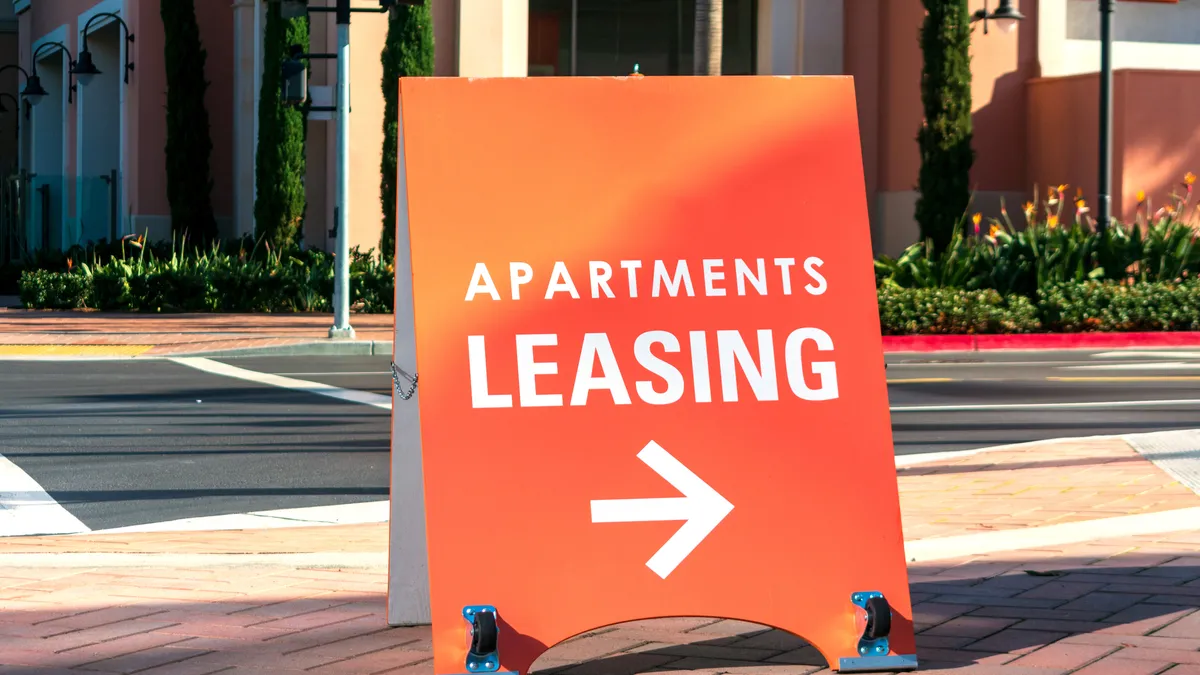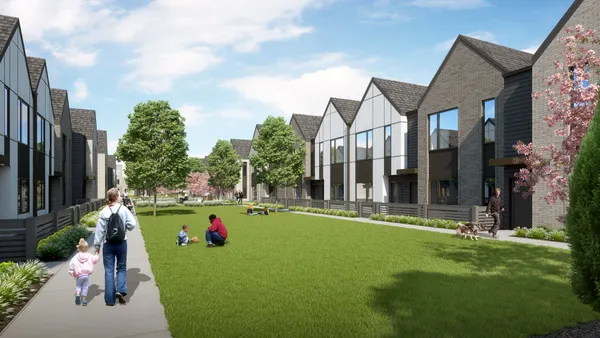If there was a mantra in the apartment industry over the last couple of years, it had to be “Survive for ‘25.”
Burdened by rising capital costs and surging deliveries flooding many cities, particularly in the Sun Belt, multifamily executives just wanted to get through 2024.
“[2024] was a pretty tough year in terms of the combination of occupancy and rent growth,” said Jon Siegel, co-founder and chief investment officer at Bethesda, Maryland-based apartment owner RailField. “It was a flat year if you're lucky.”
The deterioration was evident in November’s numbers. During the month, the median asking rent fell 0.7% year over year and 1.1% from October, according to Redfin. The asking price per square foot for rental apartments dropped 2.2% year over year to its lowest level since December 2021.
With that market softness, survival is still on many apartment executives’ minds, even as 2024 has passed. “2025 will be a transitional year,” Siegel said. “I think 2026 is probably when we're back into the upcycle.”
The good news for multifamily executives is that demand for apartments remains strong. In markets with low supply, 2025 shows promise for apartment operators. However, in those metros dealing with new deliveries, landlords will need to wait another year for real growth.
Supply should remain high for three quarters
The consensus seems to be that the apex of new apartment openings passed in the second half of 2024, though the timing seems to vary by observer and market.
“We believe that peak deliveries of new supply that are impacting our submarkets and properties occurred this past third quarter,” CEO Eric Bolton said on Memphis-based REIT MAA’s third-quarter earnings call in November.
Ryan Davis, CEO of Witten Advisors, a Dallas-based firm that provides advisory services to apartment companies, saw peak supply hit a little later — in Q4. In 2025, he expects new deliveries to fall by only about 20,000 units.

Others also expect to see a continuing surge of new competition this year.
“On the supply side, ’25 is going to look a lot like ’24 across most of [our] markets in terms of new deliveries,” CEO Ric Campo said on Houston-based REIT Camden Property Trust’s Q3 earnings call in November. “So, supply-demand dynamics in 2025 are going to look fairly similar to what they have been in 2024.”
However, by late 2025 into early 2026, deliveries should fall dramatically and continue to drop next year, according to Davis. “Once you get into 2026, we will get that reduction in competition,” he said.
Like others, Jay Parsons, head of investment strategy at Lubbock, Texas-based owner and operator Madera Residential, expects an improved vacancy and concessions picture in the second half of the year as supply burns off.
“If you think about the impact to rent roll growth, which is more of a lagging indicator, and the final part of this lease-up wave stabilizing, I think 2026 continues to be more of a reasonable target [for rent growth],” Parsons said. “You can even make the case that it will be an above-average year.”
Demand should remain strong
Despite that record-high Q3 supply, apartment owners, even in markets with high competition, were able to survive 2024. The reason was record high demand.
“Employment growth continues to surprise to the upside, and income growth has outpaced consensus expectations,” UDR CEO Tom Toomey said on the Highlands Ranch, Colorado-based REIT’s Q3 earnings call in October. “This has led to more than 450,000 newly delivered apartment homes being absorbed nationally during the first nine months of the year, which is approximately 50% above the long-term average.”
MAA, with a Sun Belt portfolio facing pressure from new supply, saw record low turnover in Q3, and it was the first quarter since Q1 2022 where the number of units absorbed exceeded the apartments delivered in its markets.
High interest rates have boosted rental demand by making homeownership more expensive. For instance, in Arlington, Virginia-based AvalonBay Communities’ coastal markets, the spread between renting and owning a home is the widest company executives have seen.
“This lack of affordable for-sale alternatives should continue to support a lower level of resident turnover and a greater propensity for new households to rent versus own,” Sean Breslin, AVB’s chief operating officer, said on the REIT’s Q3 earnings call in November.
In 2025, AVB executives see strong demand to support revenue growth. In its established coastal regions, rent-to-income ratios are currently about 10% below where they were at the beginning of 2020, according to Breslin.

“A financially well-positioned renter and relatively unaffordable for-sale housing alternatives will all support steady demand for our apartment homes in the year ahead,” Breslin said.
While Breslin expects healthy job and wage growth, economic issues, should they arise, could impact demand. On UDR’s Q3 call, President and Chief Financial Officer Joe Fisher said that the “wild card” for the year would be “what takes place with jobs and wages, household formation, et cetera.”
The rent picture varies by market
With demand on track to remain strong, supply again appears to be the key factor in rental performance in 2025. In those Sun Belt markets with high supply, it could be challenging even with fewer new deliveries than in 2024.
Chicago-based Equity Residential CEO Mark Parrell doesn’t expect a recovery in same-store revenue in the REIT’s Sun Belt expansion markets until 2026. UDR sees pricing stability in Denver, Dallas, and Tampa and Orlando in Florida by mid-2025, but other markets will continue to struggle.

“The timeline for Nashville and Austin are elongated, and we would expect supply-demand equilibrium in late 2025 and into 2026 in those markets,” UDR Senior Vice President of Operations Mike Lacy said on the Q3 earnings call.
However, some executives with Sun Belt properties predict improvement earlier in the year.
“We expect to see normal seasonal leasing patterns for the next couple of quarters and remain convinced that the spring leasing season will usher in the start of a recovery cycle with more favorable leasing conditions as demand and absorption trends across our markets remain strong and the volume of new supply deliveries steadily declines,” Bolton said.
Even with that expected improvement, things look better in the coastal markets. There, AVB expects new deliveries to be 1.4% of existing stock in 2025, roughly 100 basis points lower than what’s forecast for the Sun Belt, according to Breslin.
“Our same-store portfolio will further benefit from being roughly 70% suburban, where deliveries are expected to be roughly 1% of stock in 2025,” Breslin said. “Overall, we believe our portfolio is well insulated from the impact of excessive new supply in 2025.”
Helping drive coastal performance for apartment operators will be continued strength on the East Coast and return-to-office policies from major employers like Salesforce and Amazon on the West Coast.
“I’m not sure we felt the full impact of [the return to office] yet across all of our coastal regions as people are sort of inching their way back to what they think is a normal state,” Breslin said.
Click here to sign up to receive multifamily and apartment news like this article in your inbox every weekday.










